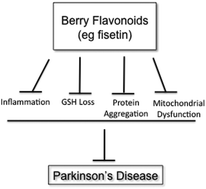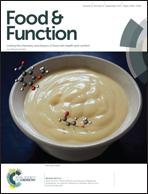Protective effects of fisetin and other berry flavonoids in Parkinson's disease
Abstract
Parkinson's disease (PD) is an age-associated degenerative disease of the midbrain that results from the loss of dopaminergic neurons in the substantia nigra. It initially presents as a movement disorder with cognitive and other behavioral problems appearing later in the progression of the disease. Current therapies for PD only delay the onset or reduce the motor symptoms. There are no treatments to stop the nerve cell death or to cure the disease. It is becoming increasingly clear that neurological diseases such as PD are multi-factorial involving disruptions in multiple cellular systems. Thus, it is unlikely that modulating only a single factor will be effective at either preventing disease development or slowing disease progression. A better approach is to identify small molecules that have multiple biological activities relevant to the maintenance of brain function. Flavonoids are polyphenolic compounds that are widely distributed in fruits and vegetables and therefore regularly consumed in the human diet. While flavonoids were historically characterized on the basis of their antioxidant and free radical scavenging effects, more recent studies have shown that flavonoids have a wide range of activities that could make them particularly effective as agents for the treatment of PD. In this article, the multiple physiological benefits of flavonoids in the context of PD are first reviewed. Then, the evidence for the beneficial effects of the flavonol fisetin in models of PD are discussed. These results, coupled with the known actions of fisetin, suggest that it could reduce the impact of PD on brain function.

- This article is part of the themed collection: Berry Health Benefits Symposium


 Please wait while we load your content...
Please wait while we load your content...